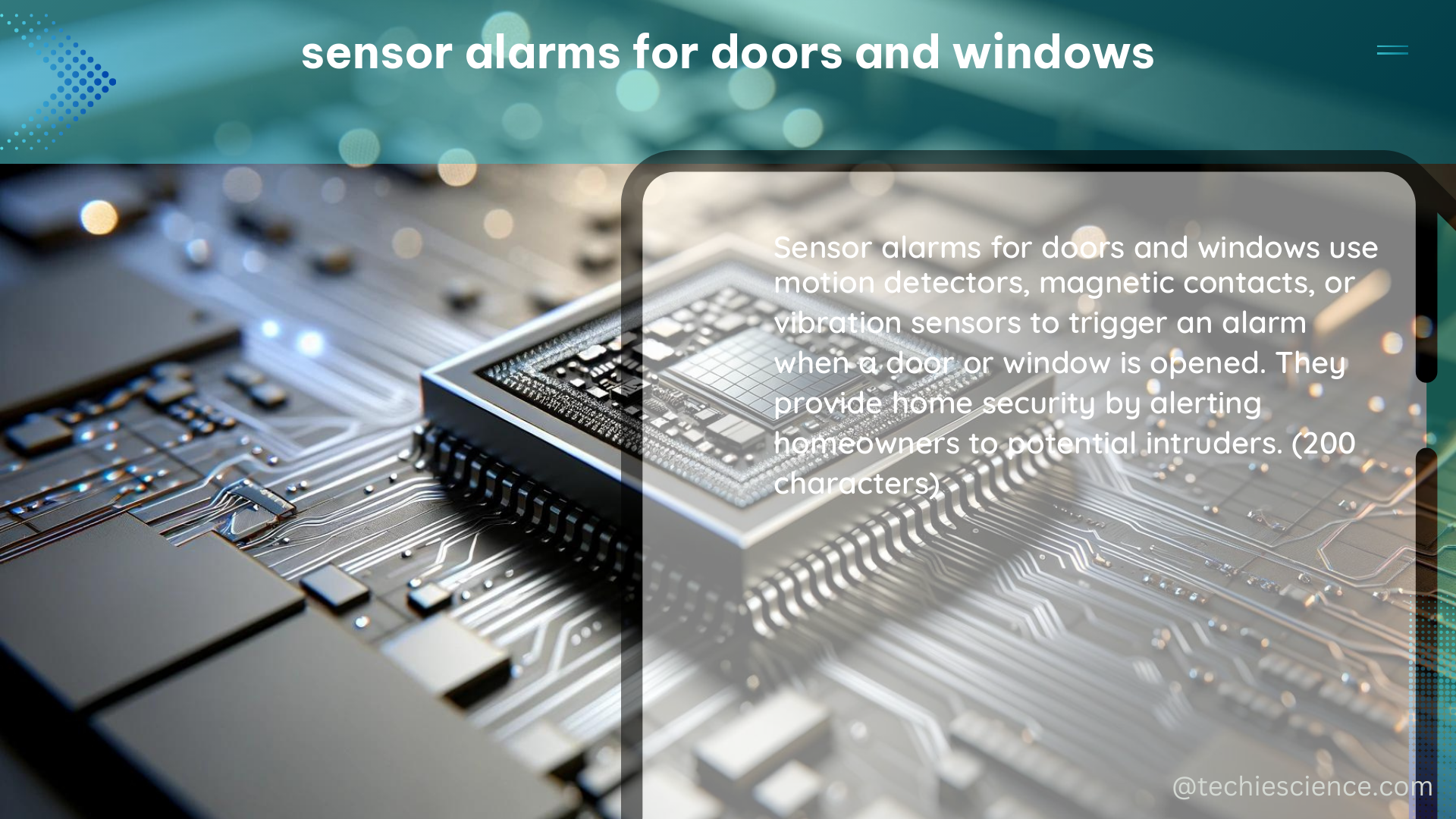Sensor alarms for doors and windows are a critical component of any comprehensive security system, providing real-time monitoring and alerting to prevent unauthorized access and enhance overall safety. These sensors work seamlessly with access control systems, allowing for effective enforcement of security policies and immediate response to potential breaches.
Understanding Door and Window Sensors
Door sensors are designed to detect the status of a door, whether it is open or closed. In door contact access control systems, these sensors play a pivotal role in monitoring the door’s state. Interestingly, door and window sensor alarms are essentially the same device, capable of being connected to the same access control system dashboard to consolidate alarm signals and notifications for the business owner or administrator.
Determining Sensor Placement

When installing a sensor alarm system, a common question arises: “Do I need to install a sensor on every window?” The answer lies in the purpose of window sensors, which are intended to trigger alarms when a window is opened or forced. Therefore, there is no need to install window sensors on windows that cannot be opened or forced, such as those located on higher floors. The decision on which windows to protect with sensor alarms should be made by your team, based on the specific layout and accessibility of your premises. While it is not necessary to cover every window, it is generally recommended to enable the alarm on all accessible windows to maximize security.
Wireless Door Alarms: The Advanced Solution
Wireless door alarms represent the most advanced and customizable door alarm solutions on the market. Leveraging wireless technology, these alarms are incredibly easy to install and integrate into a comprehensive security system, including motion sensors, security cameras, and access control. Compared to traditional alarms, wireless door alarms are more sensitive, smaller, and provide stronger, undetectable protection, especially for hard-to-reach areas. Additionally, they can be set up independently or seamlessly integrated into an existing wired alarm system. Backup power supplies ensure the system remains operational even during power outages.
Sensor Brands and Performance
When it comes to sensor alarms, certain brands have gained a reputation for their exceptional performance and reliability. Aqara products, for instance, are often recommended for their speed, accuracy, and battery efficiency. These sensors can be paired with ZigBee without the need for a hub, and they are known for their instant response and rock-solid performance. Another highly regarded brand is Ecolink, known for its door sensors’ years-long battery life, instant notifications, and consistent reliability.
Technical Specifications
To ensure you make an informed decision when selecting sensor alarms for your doors and windows, it’s essential to understand the key technical specifications:
| Specification | Details |
|---|---|
| Sensor Type | Magnetic contact sensor (door and window) |
| Communication Protocol | Z-Wave, ZigBee, or Wi-Fi |
| Power Supply | Battery-powered (CR2032 or CR123A) |
| Battery Life | Up to 5 years |
| Operating Temperature | -10°C to 50°C |
| Operating Humidity | 0% to 85% non-condensing |
| Dimensions | 30mm x 10mm x 35mm |
| Weight | 20g |
| Wireless Frequency | 908.42 MHz (US), 868.42 MHz (EU), 921.42 MHz (AU/NZ) |
| Wireless Range | Up to 100 meters (line of sight) |
| Sensor Accuracy | ±1mm |
| Sensor Response Time | <50ms |
DIY Installation Steps
Installing sensor alarms for doors and windows can be a straightforward DIY project. Here are the typical steps:
- Choose the location for the sensor on the door or window frame.
- Clean the surface with a dry cloth.
- Remove the adhesive tape from the back of the sensor.
- Attach the sensor to the frame, ensuring it is level and aligned with the door or window.
- Test the sensor by opening and closing the door or window.
- Pair the sensor with the alarm system or access control system.
- Test the alarm system to ensure the sensor is functioning properly.
By following these steps, you can ensure a secure and reliable sensor alarm system for your doors and windows, enhancing the overall security of your premises.
Conclusion
Sensor alarms for doors and windows are a crucial component of any comprehensive security system. They provide real-time monitoring and integration with access control systems, allowing for effective enforcement of security policies and immediate response to potential breaches. When selecting sensor alarms, it is essential to consider factors such as wireless capabilities, ease of installation, and compatibility with existing systems. By understanding the technical specifications and following the DIY installation steps, you can ensure a secure and reliable sensor alarm system for your doors and windows.
References:
– Intrusion Sensor – an overview | ScienceDirect Topics
– Door Alarm Sensors Types, Functioning and Manufacturers | Kisi
– An Approach for Representing Sensor Data to Validate Alerts in Ambient Assisted Living
– /r/homeassistant – It’s 2023 and you have to buy door sensors, what’s your choice?
– Hacking a wireless burglar alarm sensor. – Arduino Forum

The lambdageeks.com Core SME Team is a group of experienced subject matter experts from diverse scientific and technical fields including Physics, Chemistry, Technology,Electronics & Electrical Engineering, Automotive, Mechanical Engineering. Our team collaborates to create high-quality, well-researched articles on a wide range of science and technology topics for the lambdageeks.com website.
All Our Senior SME are having more than 7 Years of experience in the respective fields . They are either Working Industry Professionals or assocaited With different Universities. Refer Our Authors Page to get to know About our Core SMEs.